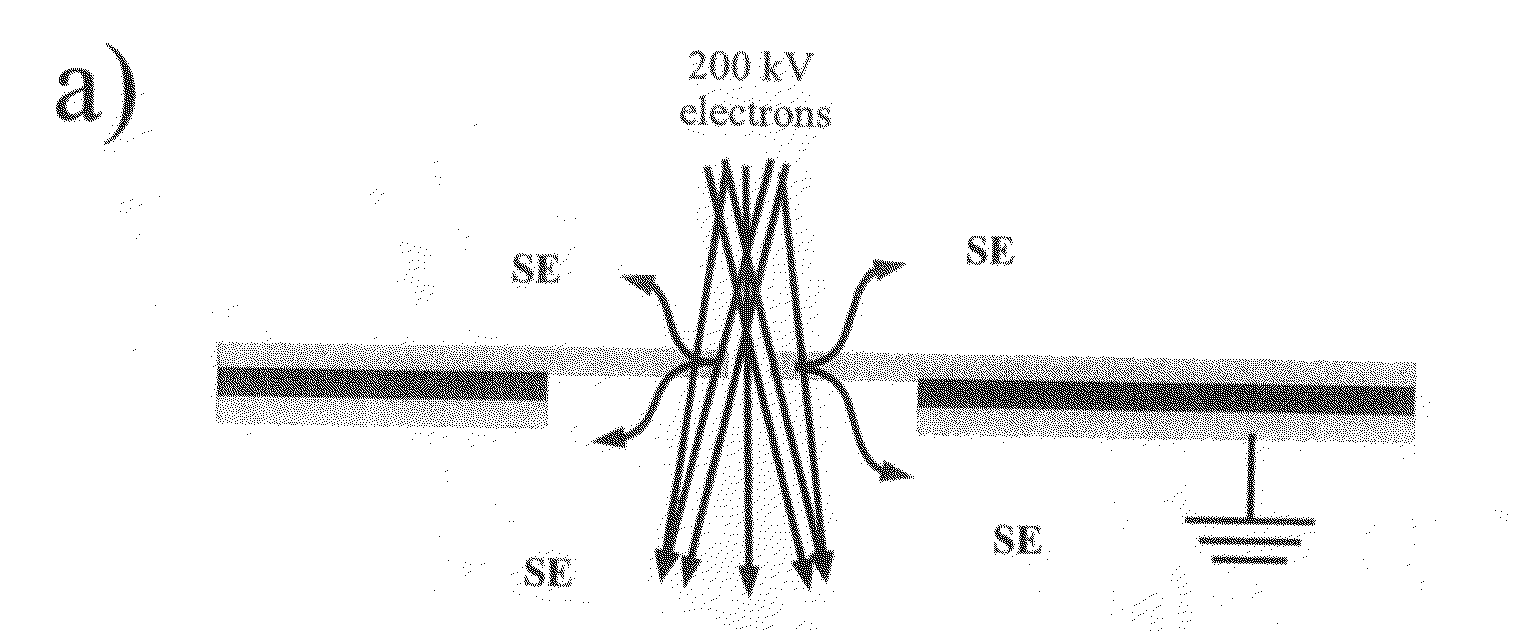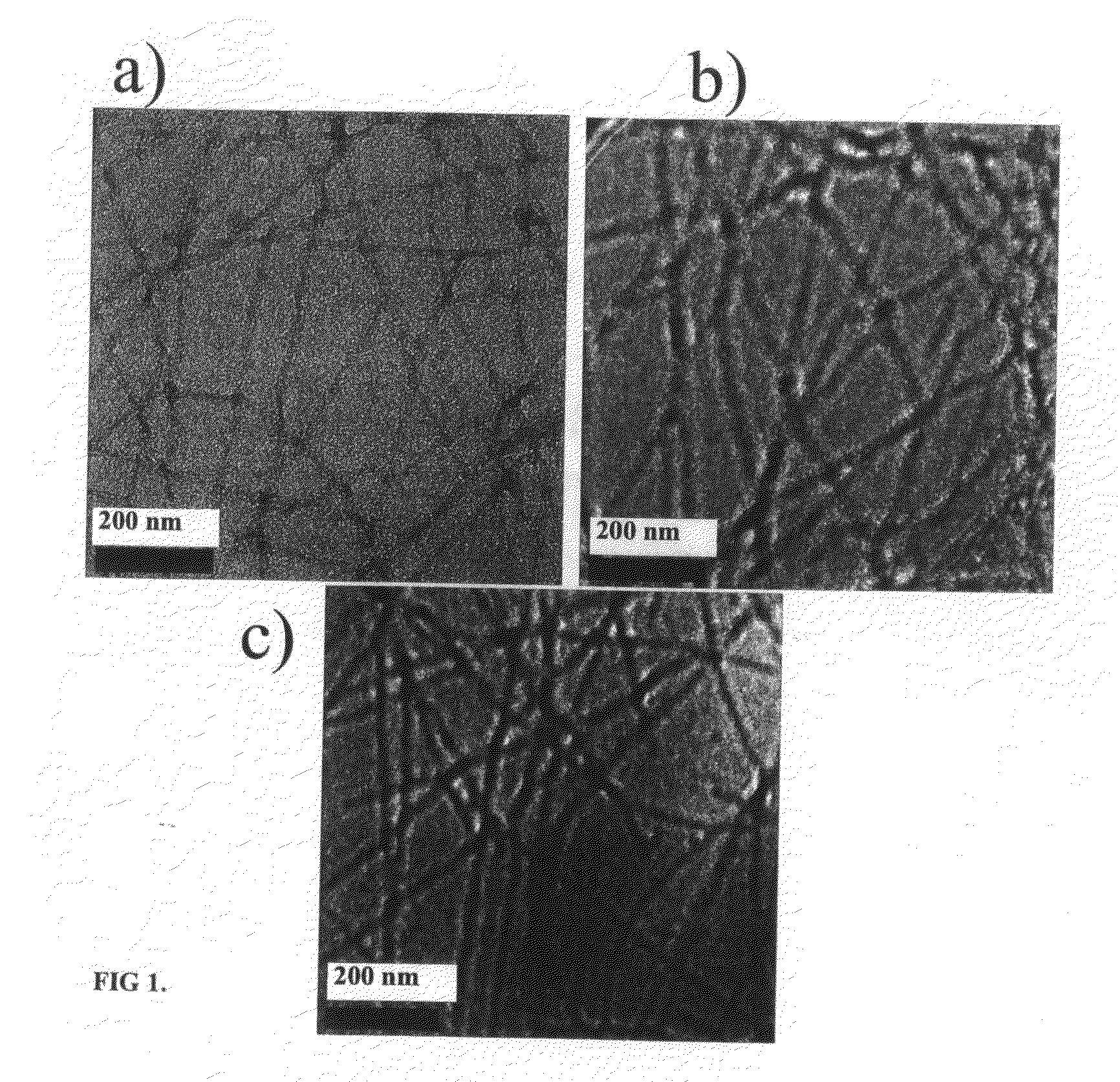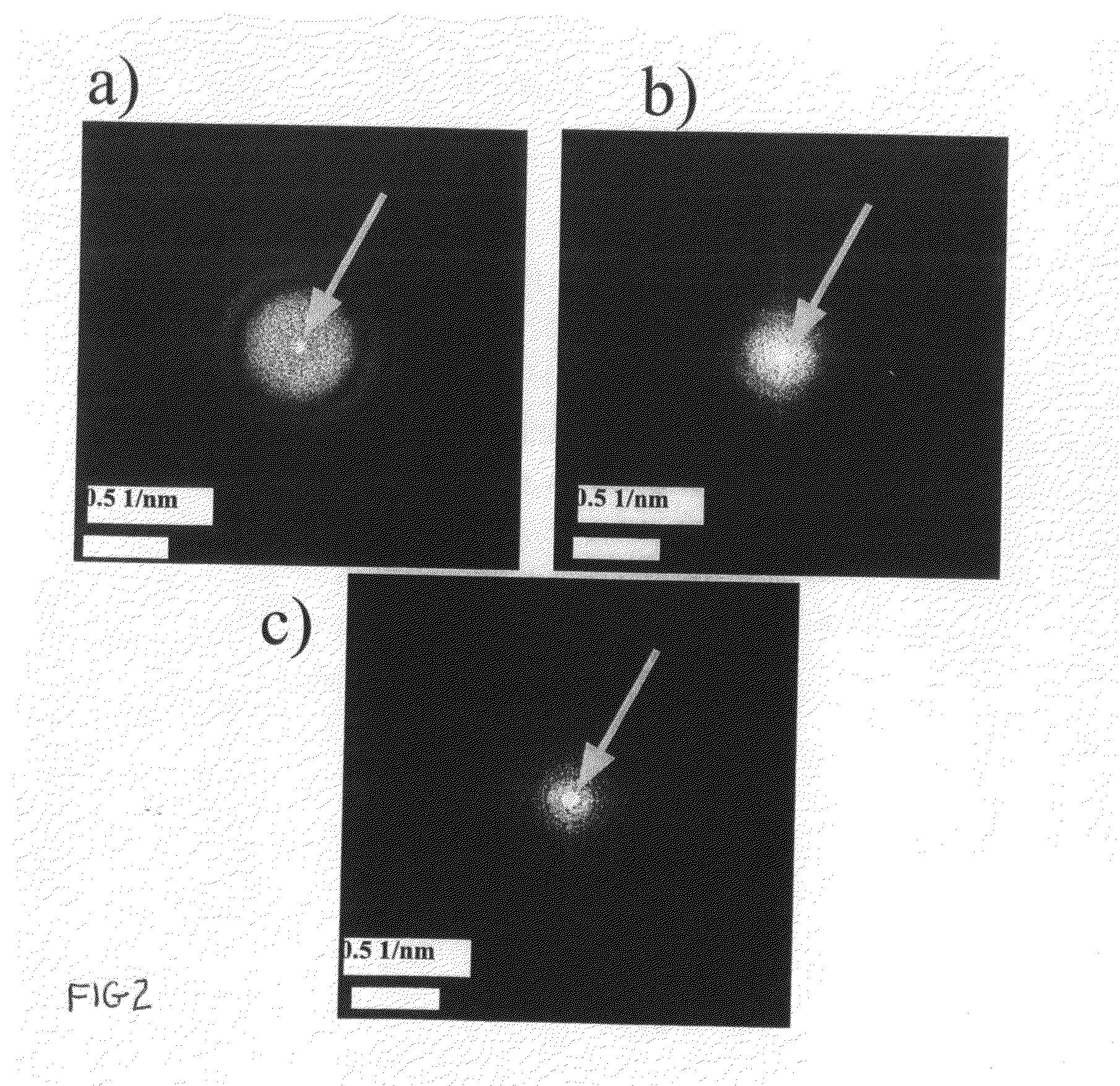Phase contrast imaging and preparing a tem therefor
a phase contrast and imaging technology, applied in the field of transmission electron microscopes, can solve the problems of difficult alignment on standard tems, difficult fabrication and installation, and difficulty in accurately forming a hole or electrode system a few hundred nanometers in lateral dimensions, and achieves the effect of simple phase plate positioning and easy placemen
- Summary
- Abstract
- Description
- Claims
- Application Information
AI Technical Summary
Benefits of technology
Problems solved by technology
Method used
Image
Examples
Embodiment Construction
[0030]A technique is provided for phase contrast imaging involving preparing a hole-free thin film for TEM imaging with the electron beam itself focused on a center of the charged beam, which now does not have to be precisely aligned. The preparation involves charging the hole-free thin film, or boring a hole therethrough to produce a conventional ZPP, that is uncharacteristically centered within the TEM without equipment required for submicron alignment.
Charging of Hole-Free Thin Films
[0031]Several experiments were performed that demonstrate that a hole-free thin film in use is subject to charging that can produce a phase contrast transfer function (CTF) suitable for phase contrast imaging. Because only the difference between the phase shift experienced by the scattered beam with respect to the incident beam results in phase contrast, the uniform films without a hole were not expected to result in a phase contrast. It is a surprising and counterintuitive result that phase contrast ...
PUM
 Login to View More
Login to View More Abstract
Description
Claims
Application Information
 Login to View More
Login to View More - R&D
- Intellectual Property
- Life Sciences
- Materials
- Tech Scout
- Unparalleled Data Quality
- Higher Quality Content
- 60% Fewer Hallucinations
Browse by: Latest US Patents, China's latest patents, Technical Efficacy Thesaurus, Application Domain, Technology Topic, Popular Technical Reports.
© 2025 PatSnap. All rights reserved.Legal|Privacy policy|Modern Slavery Act Transparency Statement|Sitemap|About US| Contact US: help@patsnap.com



